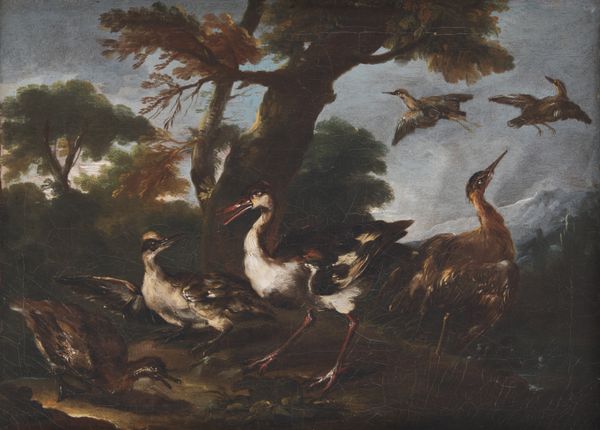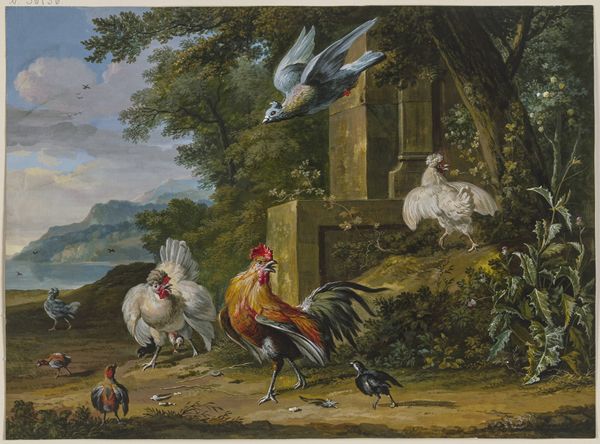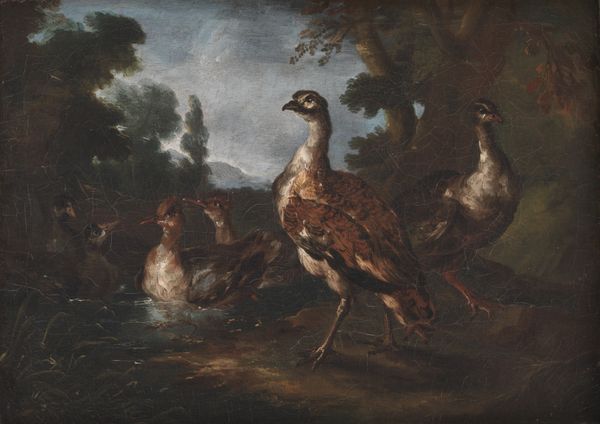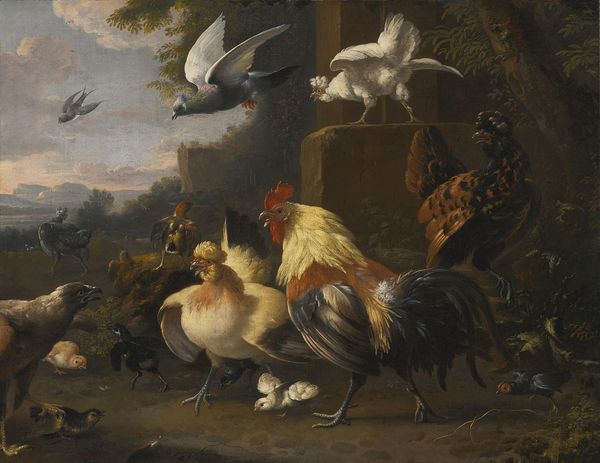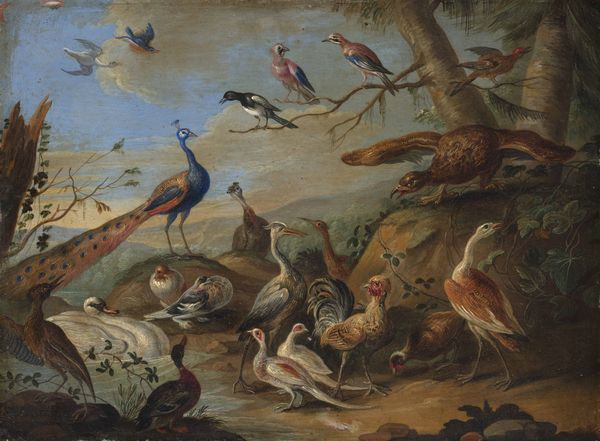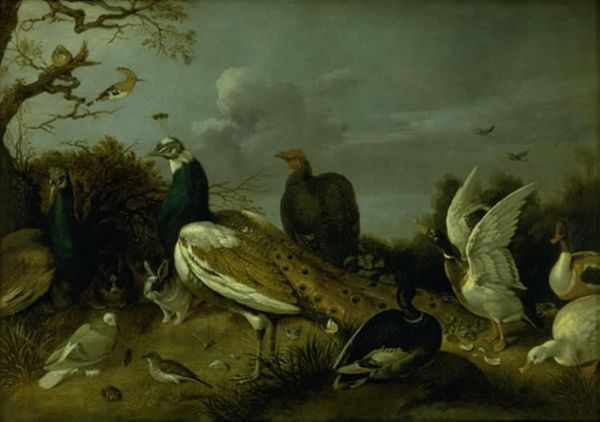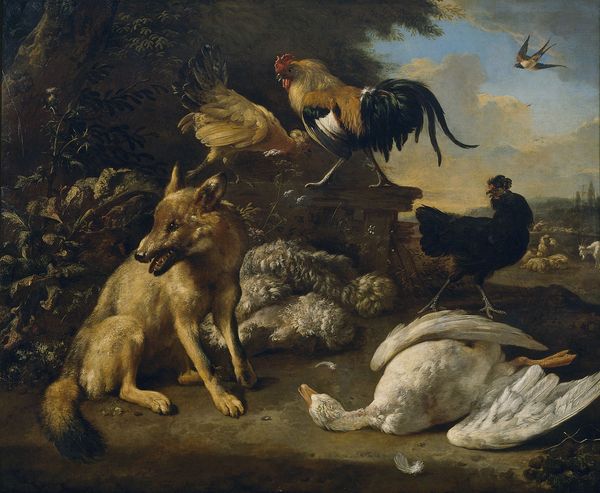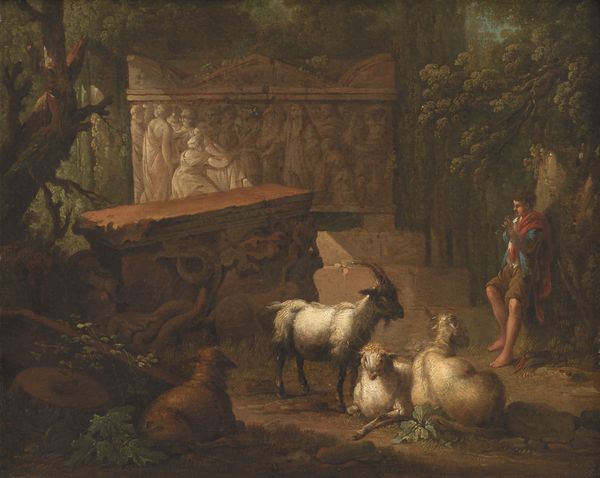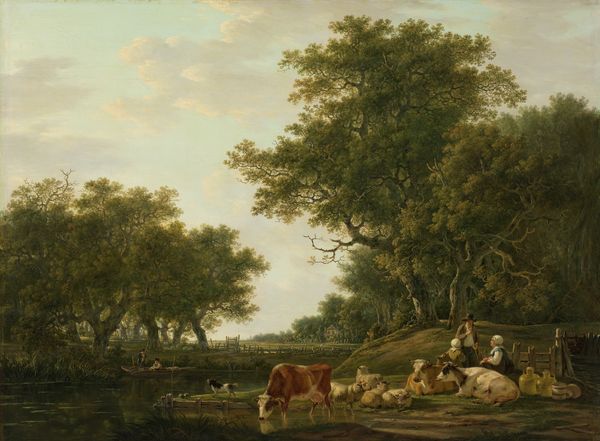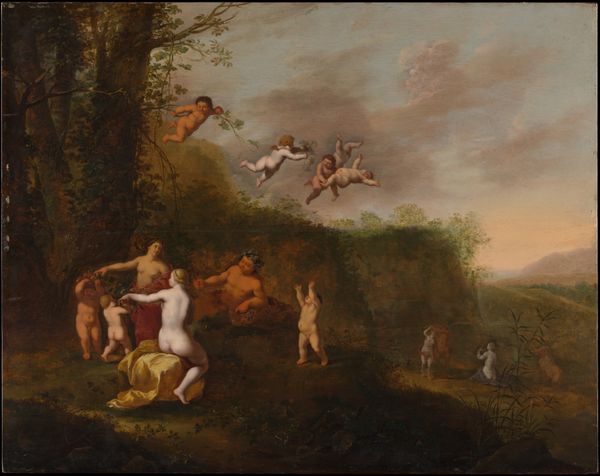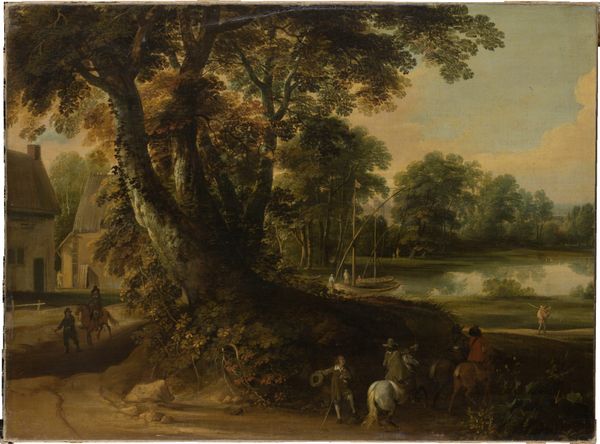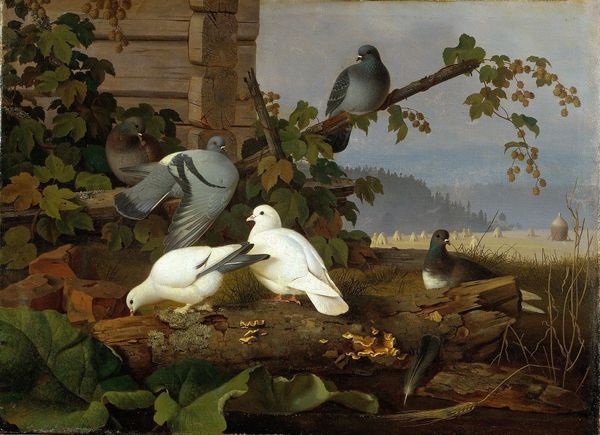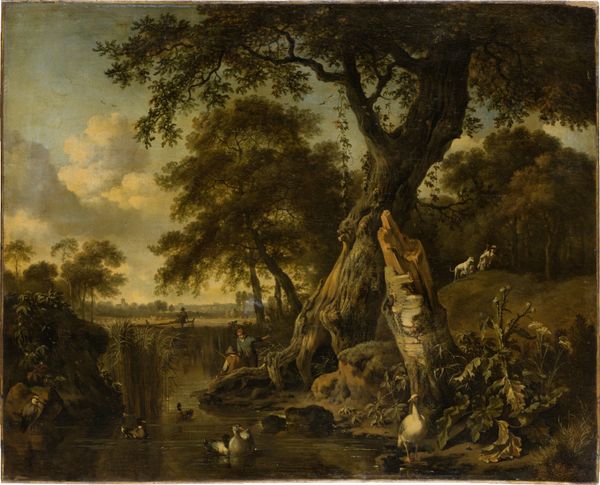
oil-paint
#
oil-paint
#
landscape
#
figuration
#
oil painting
#
genre-painting
#
realism
#
rococo
Dimensions: 25 1/2 x 31 3/4 in. (64.8 x 80.6 cm)
Copyright: Public Domain
Editor: So, this is Jean-Baptiste Oudry's "Ducks Resting in Sunshine," painted in 1753. It's oil on canvas, and seeing it now, I’m struck by how detailed the ducks are compared to the slightly looser rendering of the surrounding landscape. What catches your eye in this piece? Curator: Considering it from a materialist perspective, it’s compelling to examine how Oudry elevates what would typically be considered a craft subject, the depiction of animals, using the high art medium of oil paint on canvas. We see here a blurring of boundaries. Editor: Blurring, how so? Curator: Oudry was consciously deploying his mastery of material – oils – to represent not noble figures, but common fowl. This act inherently questions the hierarchical value system typically placed upon different subjects and mediums in the art world. Think of the labor involved in producing these pigments. Where did Oudry source his materials? How were they processed, by whom? Editor: That’s interesting. I hadn't considered the social aspect of paint production itself. So, are you suggesting he's using materials to subvert the established social order, even subtly? Curator: Absolutely. Furthermore, consider the rise of the Rococo style, of which Oudry was a part, as intertwined with the consumption habits of the French aristocracy. The leisure, display, and even humor embodied here speak to the specific socio-economic conditions of the time. How are these ducks positioned within that narrative of consumption? Editor: I guess they were literally *consumed* as food, representing wealth and perhaps the artist’s wealthy patron’s ability to acquire luxury goods. It makes you wonder about the actual lives of these creatures as products. Thanks, I see it in a completely new light now! Curator: Exactly. Looking at the process, materials, and social context allows for a much more nuanced understanding of the work and its place in history.
Comments
No comments
Be the first to comment and join the conversation on the ultimate creative platform.
